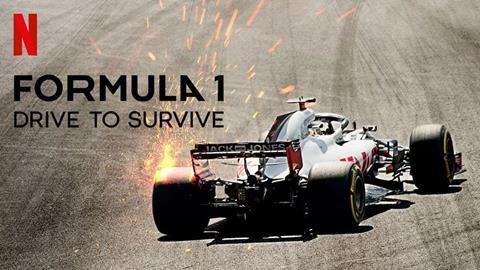Simon Hinchliffe, Prism Sport and Entertainment head of motorsport, looks at whether the cluttered landscape of behind-the-scenes motorsport series is it makes it hard for new entrants to succeed

For sports fans and wider audiences, the opportunity to watch top quality sports docuseries has never been so high. From football to golf, and rugby to NFL, whatever the sport, a series is out there. However, with so many, motorsport is arguably a unique and diverse space to navigate.
There’s no doubt that since F1’s Drive to Survive launched in 2019, it’s been a standout performer. Around 6.8 million people have tuned in, and US viewership of F1 has doubled from an average of 550,000 per race in 2018 to 1.1 million in 2023. The sixth season is out now and, rightly so, the expectation is that it will continue to drive audience growth, particularly in the United States.
Over the last five years the motorbike equivalent, MotoGP, all-electric race championship Formula E, Le Mans 24 Hours and now Nascar have produced their own versions. Each of these shared common goals in reaching a wider audience and attracting new fans - with varying levels of success. The productions are all high quality, and the content was impressive. Ultimately, they are all very similar in showcasing dramatic, competitive moments, looking to delve into what makes relatively unknown characters tick – just as Drive to Survive did. So why have they not had the same level of acclaim?
Having a streaming partner, not a platform, and a docuseries strategy aligned to the business is key. Netflix is as invested in making Drive to Survive a success as F1 was. Unlimited (MotoGP), Unplugged (Formula E) and Full Access (WEC/Le Mans) were all self-commissioned, self-promoted and often self-aired to existing audiences rather than to new. In MotoGP’s case, several editorial issues meant it failed to hit the mark and the series was pulled after just one season.
For Nascar’s recently launched Full Speed it’s too early to say. A reported 1.5 million people watched on Netflix, and it lifts the lid on an all-American powerhouse sport, which is trickier to get European audiences to engage with. As Drive to Survive tapped into new US audiences, Full Speed has the potential to do the same in Europe, while bolstering its fanbase state-side.
An already congested sports docuseries landscape became even more crowded with the release PGA Tour’s Full Swing and Tennis’ Break Point. Everywhere you look there is a sports documentary. There is a key difference being they are one focal point per sport where audiences can be drawn to. While the game of golf may be moving in different directions, audiences had one series to watch leading to 50 million+ hours viewed. These also all featured the superstars of their sports with huge social followings that were leveraged for promotion, which aside from F1, other motorsport series don’t benefit from.
With so many series to watch across several platforms, much like the wider live motorsport broadcast scene, fans must choose what to watch – few watch all - leading to thinner engagement. Not all will succeed in attracting new fans, but for sports enthusiasts, the number of high-quality shows has never been so strong.

Simon Hinchliffe is head of motorsport at Prism Sport and Entertainment.







No comments yet